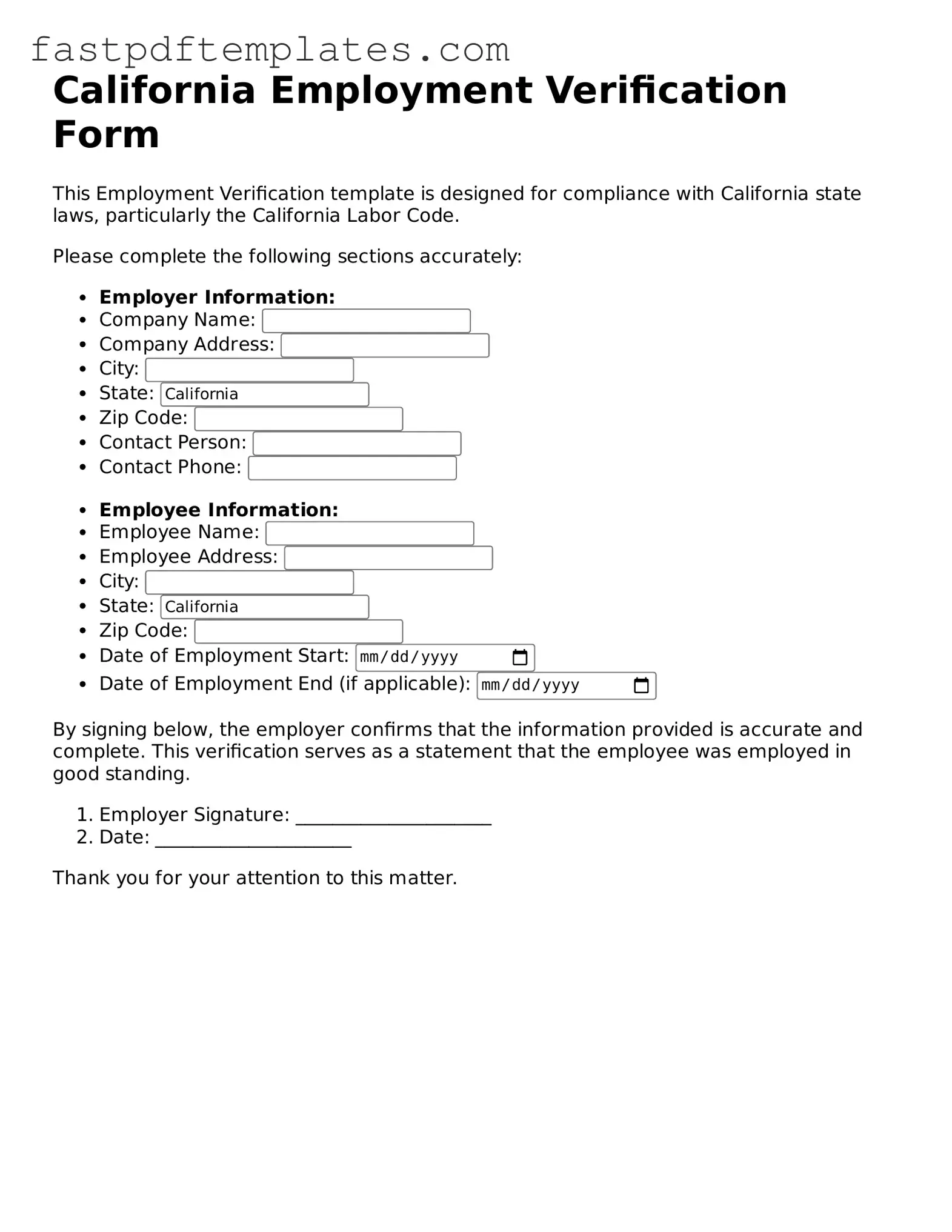The I-9 Form, also known as the Employment Eligibility Verification form, is used in the United States to verify an employee's identity and legal authorization to work. Like the California Employment Verification form, it requires specific documentation from employees to prove their eligibility. Both forms aim to ensure compliance with federal and state employment laws, safeguarding against the hiring of unauthorized workers.
The W-4 Form is another important document that employees must complete. It allows employers to determine the correct amount of federal income tax to withhold from an employee's paycheck. Similar to the California Employment Verification form, the W-4 requires personal information and must be updated whenever an employee’s financial situation changes, ensuring accurate tax withholding throughout employment.
The California New Hire Reporting form serves a different purpose but shares similarities in that it collects essential information about new employees. Employers must submit this form to the state within 20 days of hiring. Like the Employment Verification form, it helps in tracking employment and ensuring compliance with state regulations, particularly for child support enforcement.
The Paycheck Protection Program (PPP) Loan Forgiveness Application involves documentation that verifies employee retention and payroll expenses. This form requires businesses to provide proof of employee wages and hours worked. Both the PPP application and the California Employment Verification form emphasize the importance of accurate reporting and compliance with employment-related regulations.
The Form 941 is a quarterly tax return that employers must file with the IRS. It reports wages paid and taxes withheld. Similar to the California Employment Verification form, it requires precise information about employees and their earnings. Both forms help ensure that employers meet their tax obligations and maintain accurate records of employee compensation.
The Employee Handbook is a document that outlines company policies and procedures. While it is not a verification form, it often includes sections on employment eligibility and verification processes. Like the California Employment Verification form, it serves to inform employees of their rights and responsibilities, fostering a clear understanding of workplace expectations.
The Job Offer Letter is another document that shares similarities with the California Employment Verification form. It outlines the terms of employment, including job title, salary, and conditions of employment. Both documents are crucial in the hiring process, establishing a formal agreement between the employer and the employee before verification of employment eligibility occurs.
The Background Check Authorization form is used to obtain consent from candidates for background checks. This document is similar to the California Employment Verification form in that it collects personal information and is part of the hiring process. Both forms help employers make informed decisions while ensuring compliance with privacy regulations.
The Form 1099 is issued to independent contractors to report income received. While it applies to non-employees, it still requires accurate information about the individual receiving payment. Like the California Employment Verification form, it ensures proper reporting of earnings and compliance with tax obligations, even though the employment relationship differs.
The Labor Condition Application (LCA) is used for employers hiring foreign workers under the H-1B visa program. It requires employers to attest to certain labor standards. Similar to the California Employment Verification form, the LCA is a crucial part of the employment verification process, ensuring that employers meet legal requirements when hiring non-citizens.
